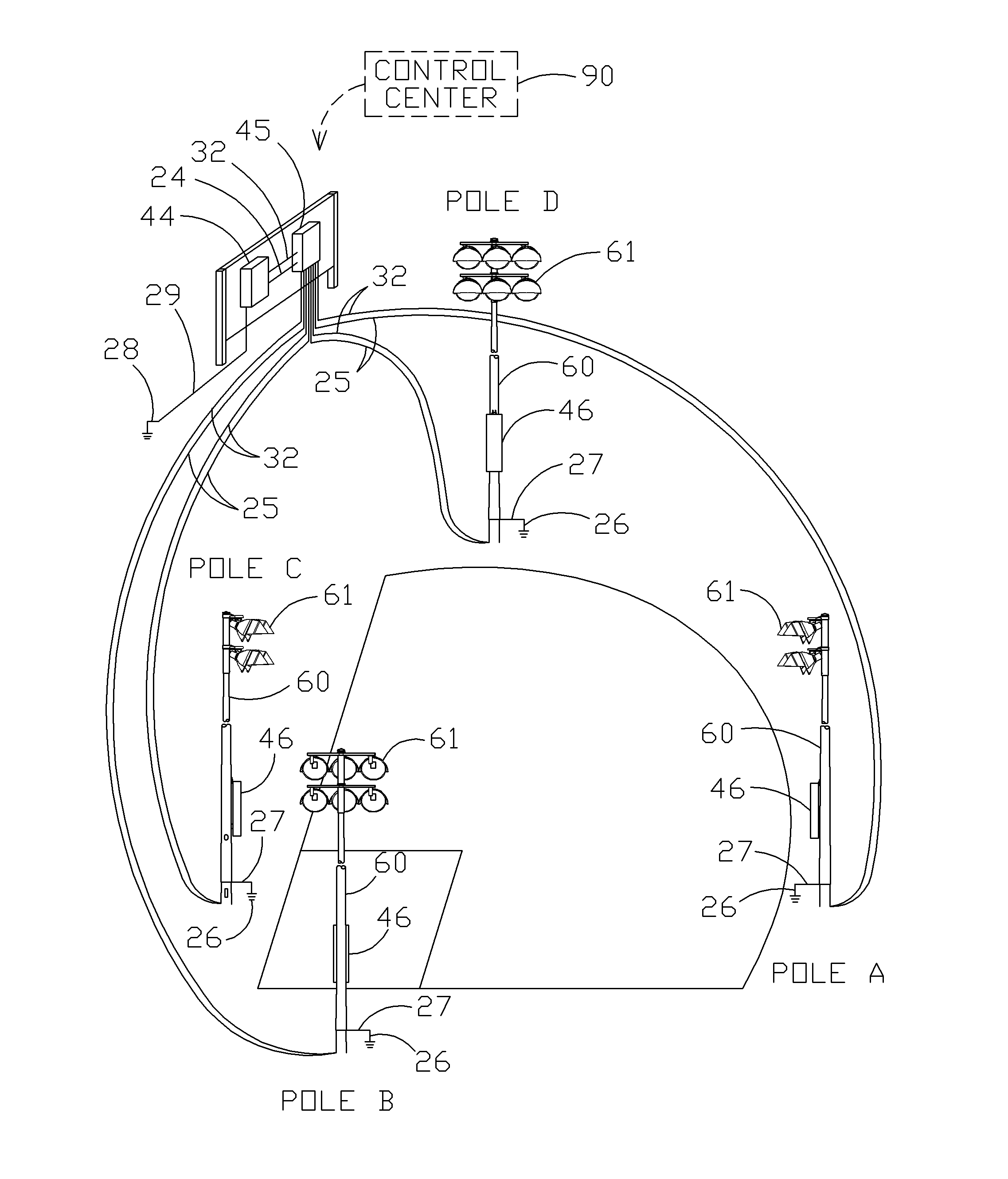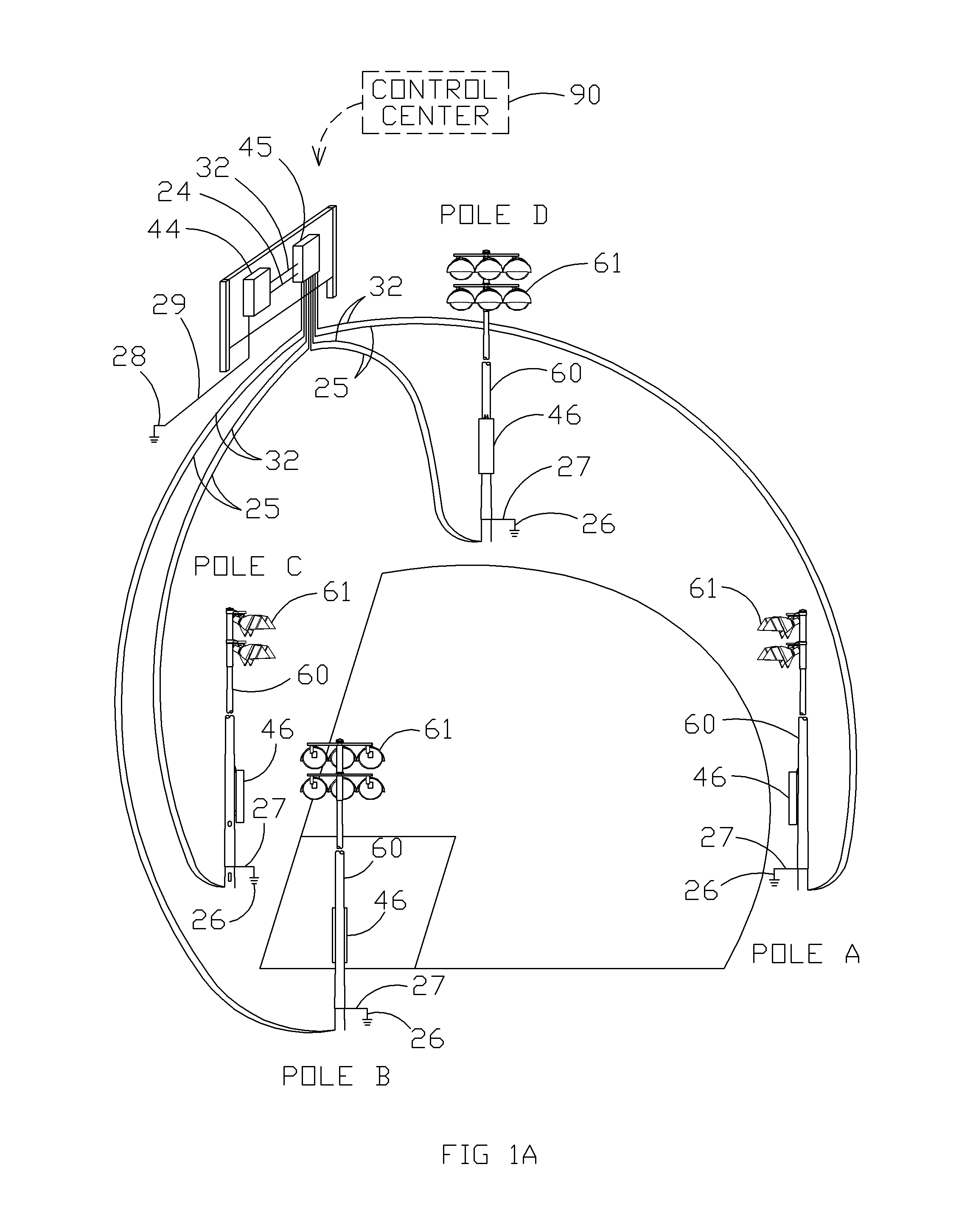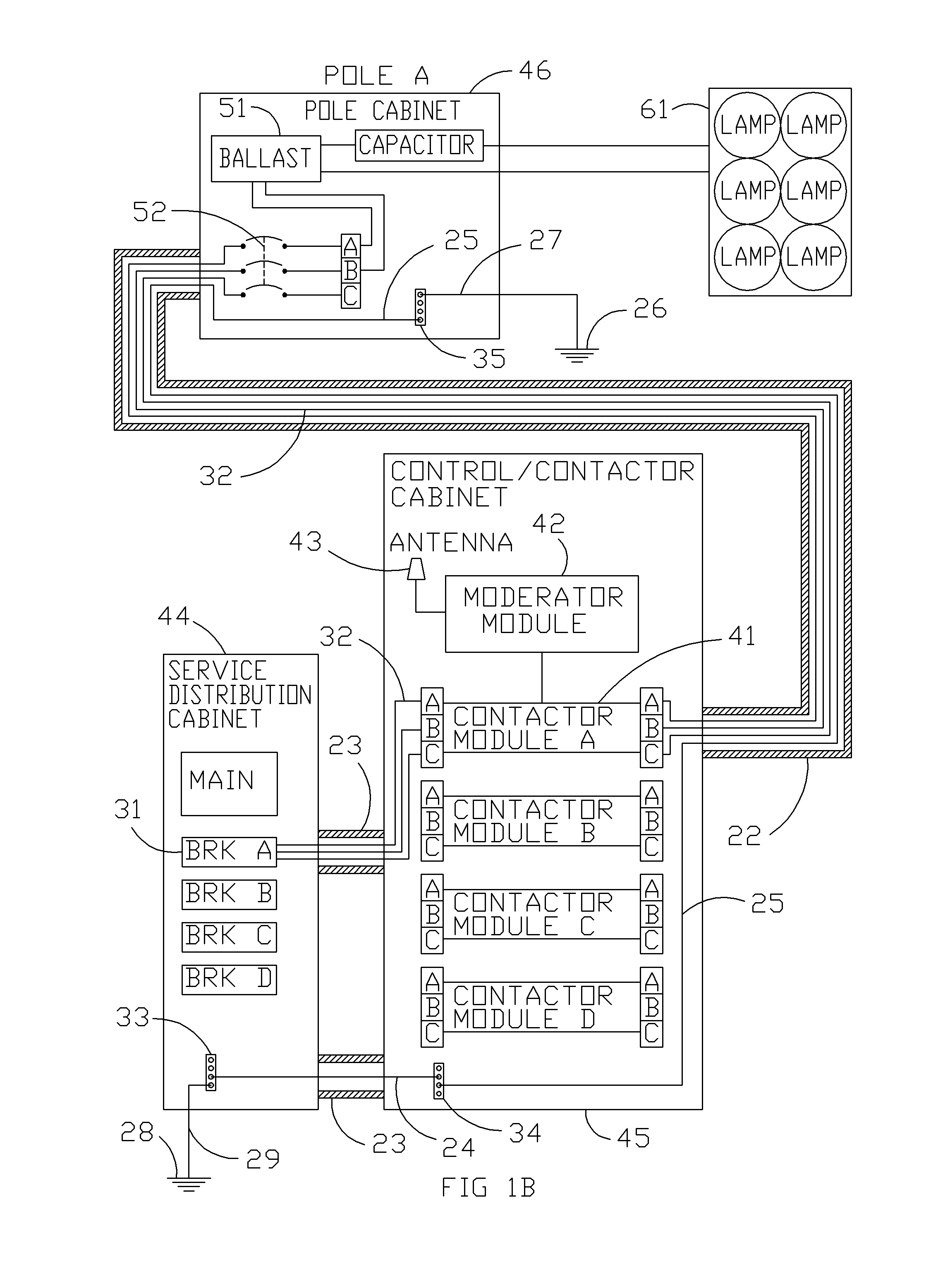Apparatus, method, and system for monitoring of equipment and earth ground systems
- Summary
- Abstract
- Description
- Claims
- Application Information
AI Technical Summary
Benefits of technology
Problems solved by technology
Method used
Image
Examples
embodiment 1
B. Exemplary Method and Apparatus Embodiment 1
[0058]A more specific exemplary embodiment, utilizing aspects of the generalized example described above, will now be described. An electrical system such as that illustrated in FIGS. 2A-2C is enabled with a ground monitoring system (GMS) module as illustrated in FIGS. 4A-4D. The GMS module comprises a series of toroids the functionality of which are illustrated in FIGS. 3A and 3B.
[0059]In this embodiment each pole60 has two conductors (25 and 56) which run from a pole cabinet 46 to a contactor cabinet 45. A first ground loop circuit comprises loop grounding bar 36, conductor 56, ground lug 62, section of earth ground wire 27, pole cabinet ground bar 35, equipment ground wire 25, contactor cabinet ground bar 34, and GMS module 80. A second ground loop circuit comprises GMS module 80, equipment ground wire 24, contactor cabinet ground bar 34, service cabinet ground bar 33, service cabinet 44, conduit 23, and contactor cabinet 45; note ser...
embodiment 2
C. Exemplary Method and Apparatus Embodiment 2
[0100]An alternative embodiment of the invention envisions an electrical system such as that illustrated in FIGS. 1A, 5A, and 5B enabled with a GMS module as illustrated in FIGS. 4A-4D. The GMS module comprises a series of toroids the functionality of which is described in Exemplary Method and Apparatus Embodiment 1.
[0101]Similar to Exemplary Method and Apparatus Embodiment 1, in this embodiment the electrical system has two ground loop circuits. The first ground loop circuit comprises GMS module 80, equipment ground wire 25, contactor cabinet ground bar 34, pole cabinet ground bar 35, earth ground wire 27, pole ground lug 62, earth ground electrode 26, earth 100, equipment ground electrode 28, equipment ground wire 29, cabinet ground bar 33, and equipment ground wire 24. Note that the flow of an imposed signal from electrode 26 to electrode 28 via earth 100 is diagrammatically illustrated by a dashed line in FIG. 5B. The first ground lo...
PUM
 Login to View More
Login to View More Abstract
Description
Claims
Application Information
 Login to View More
Login to View More - R&D
- Intellectual Property
- Life Sciences
- Materials
- Tech Scout
- Unparalleled Data Quality
- Higher Quality Content
- 60% Fewer Hallucinations
Browse by: Latest US Patents, China's latest patents, Technical Efficacy Thesaurus, Application Domain, Technology Topic, Popular Technical Reports.
© 2025 PatSnap. All rights reserved.Legal|Privacy policy|Modern Slavery Act Transparency Statement|Sitemap|About US| Contact US: help@patsnap.com



